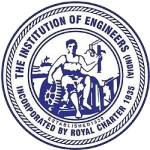CHALLENGES IN RESPECT TO SKILL DEVELOPMENT INITIATIVES FOR 5 TRILLION DOLLAR ECONOMY BY 2025 – A CASE OF CONSTRUCTION SECTOR
Abstract
Appropriate policies for the skill development occupy a dominant place in the development of an economy. Human resources are central to the performance of any economy. Skills and education are the key drivers of economic growth and socioeconomic stability.
In the short run, the framing of the skills issue is how best to reduce unemployment and in the long run skill requirement are broadly seen whether the skilled and trained work force for a given Industry meets the requirement with the demand imposed in a particular sector of the economy based on the economic growth which is projected to be 5 trillion dollars by 2025 for India.
The proportion of the workforce in the working age group is well in excess of those dependent on them, a trend that is expected to continue until 2040. The benefits of a large labour force can be leveraged to accelerate economic growth through skill development, thereby making the best use of the demographic dividend. The accelerated economic growth has increased the demand for skilled manpower that has highlighted the shortage of skilled manpower in the country especially for the construction sector.
Based on the path for a 5Trillion dollar growth by 2025, will India be able to match or slip this growth considering a humble 5% contribution of the construction sector to the GDP Growth and where India could stand in an accelerated growth path. The paper also provides suggestion to meet the challenges of construction Industry needs for skilled man power with an attempt to meet the skills demand in Indian Construction sector.
Downloads
References
[1.1] Mehrotra, AG. and Sahoo and BK,(2013). Estimating India’s Skill Gap on Realistic Basis for 2022, Economic and Political Weekly of India, Vol. 48, No.13, pp.102–111.
[1.2] GoI, (2009) National Skill Development Policy, New Delhi:Government of India. (http://www.skilldevelopment.gov.in/sites/default/files/resource/ NationalSkillDevelopmentPolicyMarch09.pdf).
[1.3] IMaCS (2012): A report of the working group in construction for the 11thfive-year plan, Planning commission, Government of India and ICRA Management Consulting services Limited (IMaCS). pp. 4-7, India.
[1.4] Ramana KR and Ramakrishna N, (2013). Skill Development in Construction Sector: The Need and Evaluation, Paper Presented at SKILLS 2013, 2nd International Conference on Life Skills and Livelihood Skills, Challenges for International Cooperation, pp. 12–14 December 2013 at NAC, Hyderabad (Discussion paper on Asia Pacific Dialogue. Organized by REEDS, supported by Government of Andhra Pradesh and Government of India).
India Today, New Delhi, Issue 13th February, 2020 – Challenges faced by Indian Construction Industry.
Copyright (c) 2021 K srinivas, K R Ramana

This work is licensed under a Creative Commons Attribution 4.0 International License.
I/We agree with the provision of the Bye-Law 118 of The Institution of Engineers (India) which states that copyright of each paper published in Institution Journal or Annual Technical Volume in full or in Abstract at its centres shall lie with the Institution.

